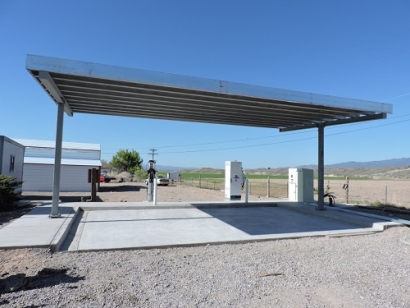
Most cities across the intermountain West are separated by long distances and EV drivers often fear they won’t have enough charge to get from one destination or charging station to the next. This new EV charging infrastructure along these routes will boost EV traffic, and reduce associated range anxiety felt between charging stations.
The REV West Plan is also expected to be an economic stimulus, promoting consumer spending along the new EV corridors and creating cost savings for EV drivers. An April 2017 study by M.J. Bradley & Associates found that if Colorado pursues even a moderate growth scenario of plug-in EV adoption, the state could see a net present value of $7.6 billion in cumulative net benefits by 2050.
States have already begun implementing the EV plan. Staff at each state energy office will leverage funds allocated by the Energy Department’s State Energy Program.
Some western states have already been developing electric highways within their own borders, as part of state-level strategic plans. Nevada has nearly completed an electric highway linking Reno and Las Vegas. The state is also building electric vehicle charging stations along Interstates 80 and 15, U.S. 93, and U.S. 50, in support of its Strategic Planning Framework 2016-2020 to complete an electric highway system serving the entire state by 2020.
(Information provided by the Office of Energy Efficiency & Renewable Energy)

